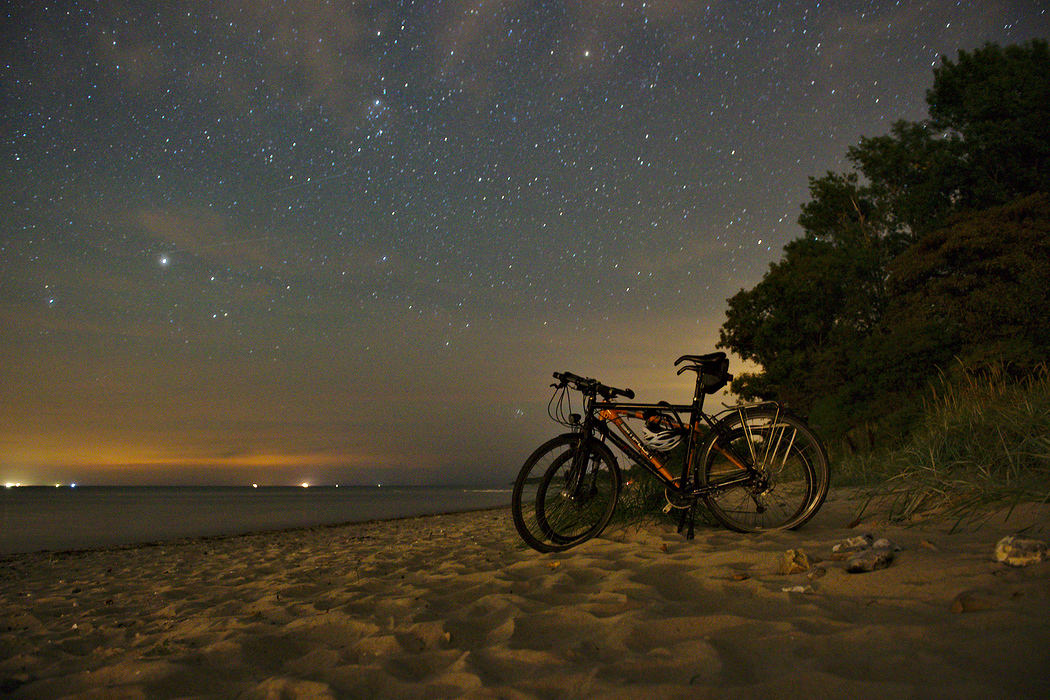After the last weekend Mihaela and I wrote two parallel journals which turned up quite similar in the end, I decided this weekend to skip writing a journal from scratch. Unfortunately the journal is in the course of beeing translated, so I’m just going to add a couple of thoughts regarding the trip.
As we we’re riding through the rural region of Mecklenburg-Vorpommen, we shared the road for a while with a girl riding a black horse. While we stopped at crossroads and we consulted the map to see which road to chose, she usually passed us, then we overtook her until the next crossroad and so on for a while. At one point, while we were riding on a country road, she overtook us galloping on nearby field, leaving a cloud of dust behind here. Considering that at that point we were riding with 20 something on our bikes, it tells a lot about the speed which can be reached by a galloping horse. The entire image was incredibly aesthetic though, and it seemed a bit taken from another century.
Fast forwarding a bit, we reach the city of Luebeck, one of the most beautiful medieval cities from northern Germany, and the most important city of the Hanseatic League. I really believe that bike touring through places full of history combined with curiosity surpasses the experience of any history book. Not only do you learn about things which happened half a millennium ago half a world away, but you also see the traces which are left behind.
Fast forwarding a bit more, we reach the beach where we spent the night under the stars. After the experience of the past bike touring trips around the Blatic Sea we found out that finding a remote empty beach isn’t really hard, but this time the bivuac spot was incredibly beautiful. After Mihaela goes to sleep, I continue playing for a while with night photography, and even though I get some nice shots I feel the real need for a tripod. We sleep the entire night under a sky full with stars, 5 meters from the sea, hearing all the time in the background the relaxing sound of waves breaking against the sandy shore.
The sunrise was also otherworldly, even though it was the only time we didn’t see the actual sunrise, but the surreal colors made up for the lack of an actual sun.
And a last fast forward and after a fight against the wind of a small hurricane, and after a small plum tasting session we reach Wismar, another Hansa city with a different history. It was one of the towns from mainland Germany which belonged for quite a while to Sweden. Apparently after emerging quite successfully from the 30 year war Sweden became for almost 100 years one of the main powers in Europe, and it also gained a part of norther Germany in the process. It all lasted until 1711 when they decided to attack Russia, like many other after them, in winter. It’s hard to guess what followed. But going back to Wismar, Sweden renounced it’s claims over the city only in 1903.
The rest of the journal is written by Mihaela, unfortunately in Romanian but which can be a source of usefull information.

The topical beach chairs of northern Europe. We never saw such inventions before coming in Germany, but I guess that in the windy and cold north the do make some sense.




























Leave a Reply